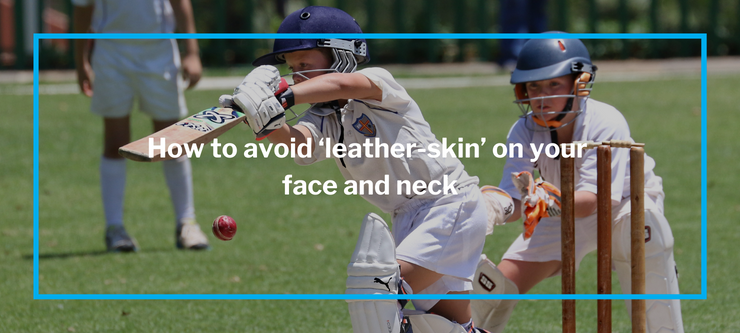It’s not just painful red skin that we get from a day’s worth of sun – after years of exposure, you might look in the mirror and see a few other unpleasant consequences. Leather-skin is one.
We happily slap sunscreen onto the obvious places like our face, arms and legs. We think less about our neck, which is exposed to the sun even when we do the right thing and slip on a shirt (unless you’re wearing a turtleneck in summer, which logic says probably not!).
What happens when we don’t protect our neck from the sun?
We get cutis rhomboidalis nuchae, more commonly known as leather-skin. You’ve probably seen it before: thick, cross-hatched deep lines etched into the back of your neck. Leather-skin happens with long-term, chronic sun exposure that causes thickening of the superficial layer of the skin.
Sure, it’s aesthetic and not life-threatening. But it’s also a sign of prolonged damage to your skin, which is a warning signal for other alarming problems.
Chronic sun exposure to your neck – something we all deal with as we live our outdoorsy Aussie lives – can lead to dangerous diseases like skin cancer and melanoma. In fact, almost 1 in 4 Australians aged in their 60s will be diagnosed with melanoma.
What’s the best sun protection for your neck?
Let’s start with the basics. The Cancer Council has it right with their advice for Aussies, which includes taking these steps when you head outside:
Slip on protective clothing. Your best defence is a UPF50+ sun protective shirt or arm sleeves that can be slipped on under your shirt.
Slop on sunscreen with at least SPF30. Ideally, you want to look for 50+ for the best protection and one with natural ingredients so it’s safer for your skin. Be sure to reapply the sunscreen every 2 hours, or immediately after swimming or sweating.
Slap on a broad-brimmed hat. A regular cap won’t cut it if your goal is to protect your neck. Broad-brimmed hats come in a bunch of fun styles these days to suit everyone, from cowboy to Victorian-era. A hat will help protect your ears and scalp, too.
Seek shade during peak sun hours. The sun's rays are the strongest between 10 am and 4 pm, so it's best to avoid prolonged sun exposure during this time. If you need to be outside, find a shaded area and take a break now and then.
Better sun protection with a UV50+ neck shield, or gaiter
Neck shield, face mask, and neck gaiter are all names for the same thing, a protective wrap for your neck and the lower part of your face. Gaiters are the ultimate sun protection for your neck, particularly if you’re a sportsperson or you work outdoors.
Neck gaiters have a few different benefits:
- Less greasy sunscreen around your face (although be aware that you will need to apply sunscreen under the mesh part over the nose and mouth).
- The fabric is made from UPF50+ fabric that blocks 98% of harmful UVA and UVB rays.
- It doesn’t wear off the way sunscreen does.
- It’s reusable and cost-effective.
You don’t have to be a sportsperson to find neck gaiters helpful for sun protection for your neck. It’s ideal for hikers, campers, cyclists, gardeners, and anyone with an outdoor job that entails several hours in the sun.
Remember, the sun's rays can still damage your skin when it’s cloudy or overcast, so it's important to protect your neck year-round – especially if your job is outdoors.
Final tips on protecting your neck from sun damage
The back of your neck is the area most likely to be exposed to the sun throughout the day. And while you might not be able to see it, there is damage being done every time we’re outside in the Aussie sun. That damage shows up years later, in ways that make us wish we’d been more careful when we were younger.
By taking simple precautions such as wearing sunscreen and sun protection clothing like face shields, seeking shade and being mindful of the time of day, you can help to reduce your risk of skin cancer, leather-skin and other sun-related skin damage.


0 comments